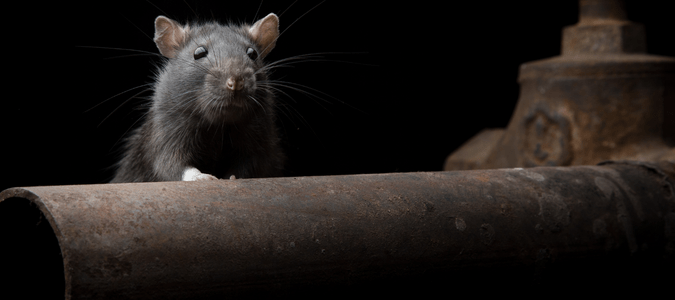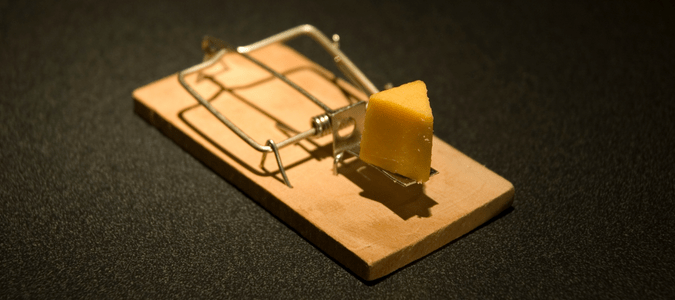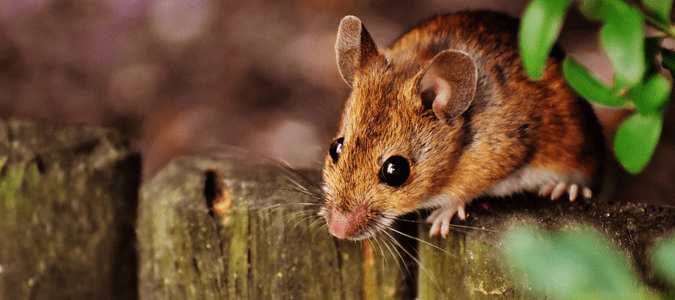Rats are rodents with long, sharp front teeth that are constantly growing. Like all rodents, these pests need to gnaw on things daily to keep those front teeth filed down. This is why finding gnaw marks is a common sign of rat activity in and around your home. These pests typically chew on wooden things, like baseboards, beams and rafters. They are also known to chew through cardboard and plastic items, as well as electric wiring. But, can rats chew through steel?
Rats can easily chew through softer materials like cardboard and plastic. They can even chew through harder things like wood and PVC pipes. But rats cannot chew through steel. They can’t chew through anything stronger than iron.
Potential Risks of Rats In Your Home
Steel is a component in some electrical wires, along with copper and other types of metal. Rats have been known to chew through electrical wiring. More often, however, they chew through the plastic covering on the outside of the wires. This exposes the metal inside, which is very dangerous in several different ways.
When electrical wiring is exposed, it can give an electric shock to anyone who touches it. It can also send off sparks, which is a major fire hazard. People have experienced fires in their homes, attics and garages that started from problems with the electrical wiring caused by rats.
This is just one reason among many that a rat problem should be dealt with as quickly and thoroughly as possible. Rats are also major pests because they reproduce so quickly. Their nests can grow exponentially in a matter of weeks. The more rats there are, the bigger the problem they are, and the harder they are to get rid of.
They are also known disease carriers. They can transmit bacteria and illnesses that make people sick, such as salmonella, plague and leptospirosis.
Rats are also a big problem in homes because they cause property damage which is why seeking professional pest control is the best option. Their gnawing can cause structural damage that costs a lot of money and trouble to fix. They also chew holes in people’s homes to get inside. These holes tend to be small, since rats can fit through surprisingly small spaces. Still, they need to be covered, filled or fixed so other pests don’t use them to gain entry into the house.
Signs of a Rat Infestation
For all of these reasons, if you suspect you may have a rat problem, it’s a good idea to reach out to a pest control professional to inspect your home and property. It may be that just one or two rats have made their way onto your property, and setting out traps may be all that is needed. But in many cases, when you notice signs of rat activity in or around your home, it means there is an active nest nearby.
Here are some of the most common signs of rat activity:
- Droppings. Rat poop looks like shiny, half-inch pellets with rounded tips that are about an eighth to a quarter of an inch in width. They are brown or black in color when fresh. If they’re older, they fade to gray or white. Many people find rat droppings in the corners of the garage, on top of unused cabinets, or under appliances like stoves and refrigerators.
- Gnaw marks. These look like small, rough etch marks in wood, cardboard or plastic. You might spot these on baseboards, the bottoms of cabinets, or wooden beams or rafters. You might also see them on cardboard boxes or PVC pipes.
- Grease marks. Rats tend to travel along the same, familiar tracks between their nests and their food sources. They also tend to walk close to walls rather than out in the open. People sometimes spot darkish, greasy track marks along the upper part of walls near rafters, or along the baseboards. These marks happen when the natural oils and dirt in rats’ fur rub off on the surfaces they routinely pass by.
- Shredded food packaging or nesting materials. When rats get into stored food, they chew through the plastic and cardboard containers to get at the food inside. They also shred paper, cardboard, cloth and even fiberglass insulation to build their nests.
- A live or dead rat. Spotting an actual rat is a pretty clear sign that there is likely to be a nest somewhere nearby.
If you see any of the above signs, it’s time to call in a trusted pest control professional for help. A pro can inspect your home and property to find all signs of rat activity, including entry points that the pests are using to get into your home. Then the pro will develop a customized plan to eliminate the infestation and prevent rats from returning in the future.
How to Get Rid of Rats in Walls
If you’re hearing scratching or squeaking sounds coming from inside your walls, you may be starting to wonder how to get rid of rats in walls. Unfortunately, rodents do sometimes build nests inside walls and ceilings. To rodent pests, these voids make the perfect, warm, protected spots for reproducing. Sometimes, people don’t realize they have rats inside their walls.
There are other signs that can indicate this type of pest activity:
- Pets reacting to them. Many people with an unknown rat problem have reported seeing their dog or cat whining or staring fixedly at a seemingly random spot on the wall or ceiling.
- If a rat dies inside your wall, you might also smell a terrible smell. Sometimes, an awful rotting smell is the first indication a homeowner has of a rat problem.
If you have any of these issues going on, you need to take action quickly to eliminate the infestation. Unfortunately, it can sometimes be difficult to get rid of rats in the walls, since these interior spaces are so hard to reach. If you have a dead rat decomposing inside the wall, sometimes the only thing you can do is wait for the smell to go away.
If you have just a few rats in the walls, you can try setting out snap traps to catch them. Be sure to set the traps up correctly, with the right amount of bait. Use just a small amount, not so much that a clever rat can steal the food without tripping the trap’s release. Also make sure to set the traps in places where rats will encounter them, but other animals—and people—won’t. Remember, rats typically stay close to walls, so be sure to lay traps alongside the wall too.
Once the rats are out of the walls, you will need to close off the entry points they used to access the inside of the walls. Look for any holes or gaps, small or large, that they might use to get in. Rats can fit through very tiny openings. Even a half-inch opening will work. Any openings you find will need to be closed off with steel wool, wire mesh or some other means.
If you think you may have rats living or breeding inside your walls, the best thing to do is to contact a pest control professional. An experienced pest control specialist can draw on their extensive knowledge and techniques to determine the best way to get rid of the pests. Then they can give you advice about how to keep rats away in the future.
Do Mice Turn Into Rats?
Some people wonder, Do mice turn into rats? Mice are not baby rats; they don’t turn into rats because they are a completely separate species. It’s understandable that people wonder this, though. If you see what looks like a very small rat, it can be hard to tell whether it’s a house mouse or a baby rat. There are several distinct differences between the two, if you know what to look for.
The biggest difference between mice and rats is their size. A full-grown rat can grow to five to ten inches long, with a tail of the same length. An adult mouse, on the other hand, typically grows to just three or four inches long, with a tail that is about two to four inches long. Rats’ tails are also thicker and hairless, while mice have thinner tails that are covered in fur.
Another difference between rats and mice is that mice have ears and eyes that are proportionately bigger, compared to their head size, than rats’ ears and eyes. Rats also have faces that are blunter than their mouse counterparts, which have pointier faces.
If you know you have rodent pests somewhere on your property but you aren’t sure whether they are rats or mice, it’s a good idea to contact a rodent control professional. A professional will be able to find the nest and any signs of rodent activity. They can eliminate the nest and then take steps to prevent pests from moving in again in the future.
ABC Can Help With Any Pest Problems
It can feel frustrating when rats damage your home, garden and yard. Instead of spending your time trying to get rid of rats on you own, contact ABC Home & Commercial Services. Our experts will be able to identify the rodents on your property. Then, we will create a custom pest treatment plan, so you don’t have to worry about these creatures.


